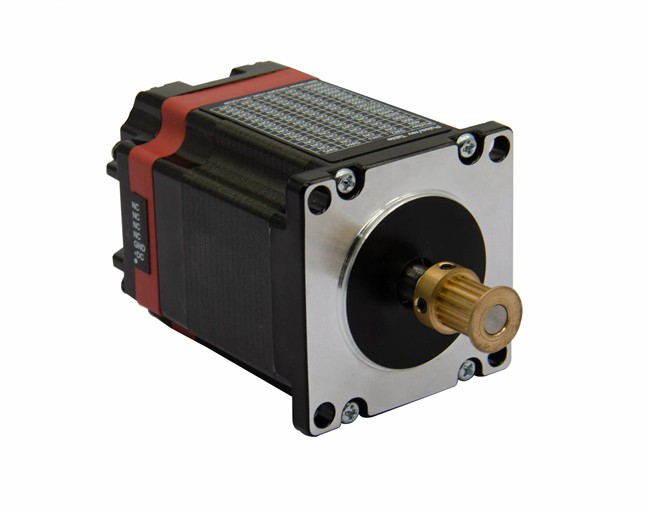Welcome!







High Torque Motors with Driver/Step Drive/Controller/Control for 3D Printer
Product Description
The working principle of a reactive stepper motor is relatively simple, with many small teeth evenly distributed on the rotor. The stator teeth have three excitation winding resistances, and their geometric axes are sequentially offset from the rotor tooth axis. The position and speed of the motor correspond one-to-one with the number of conductive pulses and frequency. The direction is determined by the order of conductivity. Generally, reactive stepper machines with two, three, four, and five phases are predominant in the market.

Although there are still certain differences between stepper motors and imported stepper motors in certain aspects, such as high-speed torque, accuracy, etc., these differences can be ignored in most cases. Especially in terms of price, stepper motors have significant advantages, making them more competitive in the domestic market. In addition, with the continuous progress of technology and the improvement of quality, the performance of stepper motors is gradually approaching or even surpassing international brands.

Stepper motors have also made continuous progress in technological innovation. With the advancement of Industry 4.0, intelligence and integration have become important trends in the development of stepper motors. By integrating advanced controllers and sensors, intelligent adjustment and fault self diagnosis of stepper motors can be achieved, improving their intelligence level. Meanwhile, the diversified design and customized services of stepper motors are also key to meeting the needs of different industrial applications.

Through reasonable design and material selection, stepper motors can provide sufficient torque to cope with various load situations, whether it is low-speed high torque operation or high-speed low torque operation, and can maintain stable output. Compared to other types of motors, stepper motors have lower working sound and lower vibration, making them very important for certain applications that require high environmental noise and vibration, such as medical equipment and precision instruments. The stepper motor has a simple structure, is easy to maintain, and adopts advanced manufacturing technology, which can operate normally in various harsh environments and has strong durability.

Stepper motor, also known as pulse motor, works based on electromagnetic principles and generates electromagnetic torque through changes in air gap magnetic conductivity. Every time a pulse signal is input, the rotor of the stepper motor will rotate at a fixed angle or move forward one step. The output angular displacement or linear displacement is proportional to the number of input pulses, and the speed is proportional to the pulse frequency. This characteristic makes stepper motors very suitable for application scenarios that require precise control of position and speed.

Recommended Products
Recently Viewed
 China Manufacturer 2-Phase Hybrid Stepper/Stepping Motor with ISO and CE
China Manufacturer 2-Phase Hybrid Stepper/Stepping Motor with ISO and CE China Supplier tepper Motor NEMA 23/Stepping Motor/Step Motor for 3D Printer
China Supplier tepper Motor NEMA 23/Stepping Motor/Step Motor for 3D Printer China Supplier Motor Swing Motor Electric Micro DC Stepper Motor for 3D Printer
China Supplier Motor Swing Motor Electric Micro DC Stepper Motor for 3D Printer China Manufacturer 2-Phase Hybrid Stepper/Stepping Motor with ISO and CE
China Manufacturer 2-Phase Hybrid Stepper/Stepping Motor with ISO and CE High Torque Motors with Driver/Step Drive/Controller/Control with ISO and CE
High Torque Motors with Driver/Step Drive/Controller/Control with ISO and CE
Contact Us
Zhongshan Shengyang Motor Co., Ltd.
